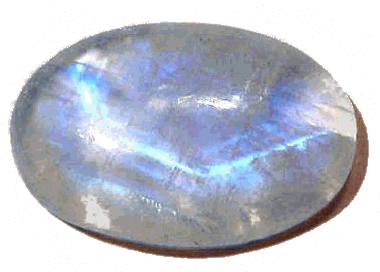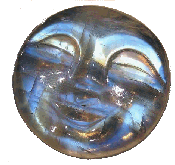Feldspar
Feldspar literally means 'in every field' and feldspars are incredibly common, it occurs widely in granite.
The Chinese kept the knowledge of adding this stone to porcelain for strength a secret for centuries.
In an effort to find the 'secret ingredient' Josiah Spode added finely ground bone powder to china clay, inadvertently creating bone china. It was not until later in the 19th century that the secret was revealed as petuntse orthoclase feldspar.

Adularia
The orthoclase name relates to the fact that the stone 'breaks straight' cleaving at almost 90 degrees.
|Structure: Monoclinic|Composition: Potassium aluminium silicate|Moh's Hardness: 6|

Labradorite

Labradorite Carving
Adularia
This variety of alkali feldspar is named after Adular-Bergstock in Switzerland.
This stone has a bluish schiller similar to that of moonstone, it is one of the main components of granite.
|Structure: Triclinic|Composition: Sodium calcium aluminosilicate|Moh's Hardness: 6-6½|Labradorite
Named after Labrador in Canada, where it was first found. This stone is grey with a blue/yellow schiller.
|Structure: Monoclinic|Composition: Potassium aluminium silicate|Moh's Hardness: 6|

Moonstone
Moonstone
The moonlike schiller of moonstone is formed by alternating layers of albite and orthoclase. Thin layers create a blue sheen, thicker layers create white. Sharing the title of stone of June, moonstone is thought to protect from nightmares. Fine stone is rare.
| Latest Trends | Ordering Information | debbie@silkpixie.com | Delivery & Returns |


